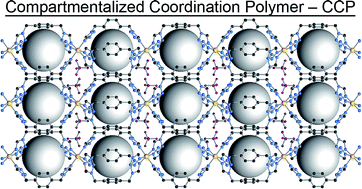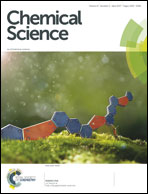Gas confinement in compartmentalized coordination polymers for highly selective sorption†
Abstract
Discrimination between different gases is an essential aspect for industrial and environmental applications involving sensing and separation. Several classes of porous materials have been used in this context, including zeolites and more recently MOFs. However, to reach high selectivities for the separation of gas mixtures is a challenging task that often requires the understanding of the specific interactions established between the porous framework and the gases. Here we propose an approach to obtain an enhanced selectivity based on the use of compartmentalized coordination polymers, named CCP-1 and CCP-2, which are crystalline materials comprising isolated discrete cavities. These compartmentalized materials are excellent candidates for the selective separation of CO2 from methane and nitrogen. A complete understanding of the sorption process is accomplished with the use of complementary experimental techniques including X-ray diffraction, adsorption studies, inelastic- and quasi-elastic neutron scattering, magnetic measurements and molecular dynamics calculations.



 Please wait while we load your content...
Please wait while we load your content...